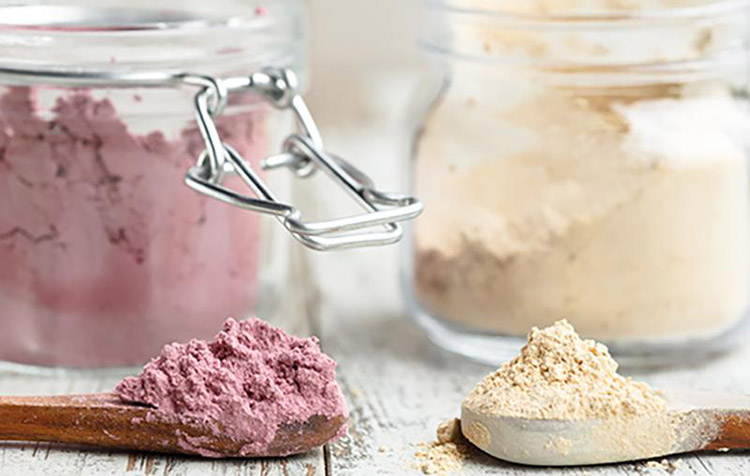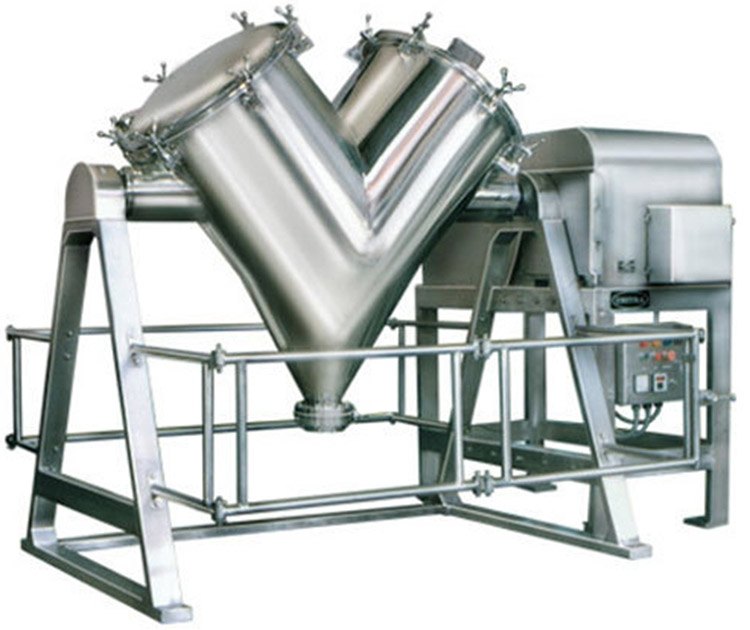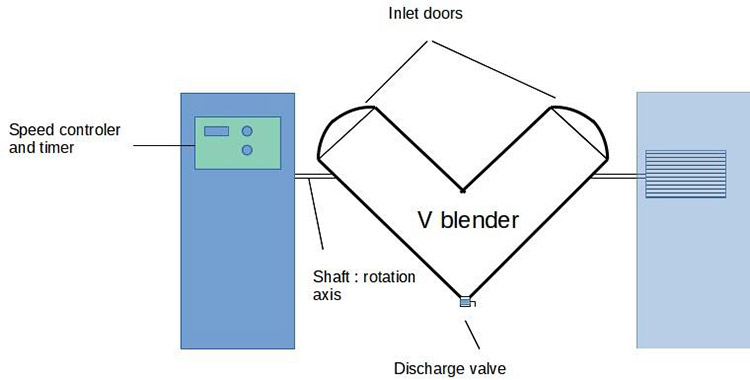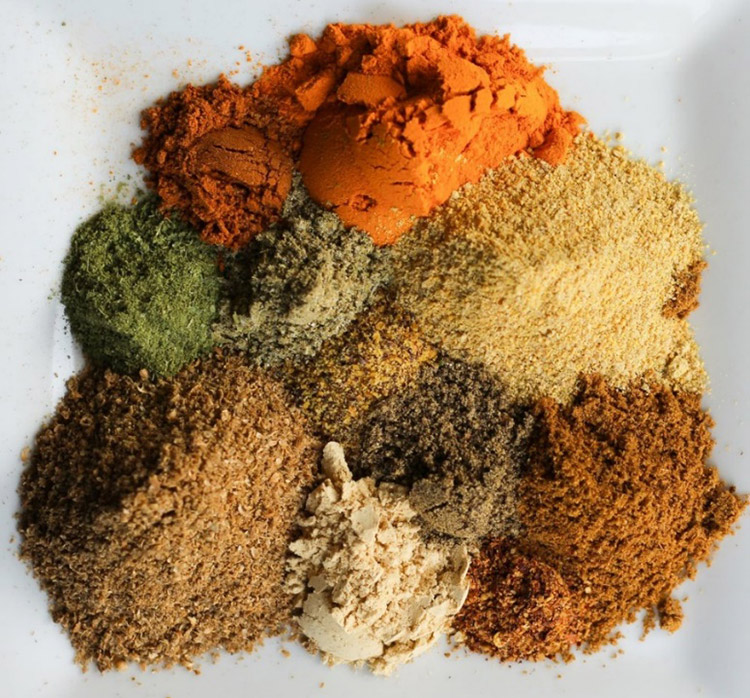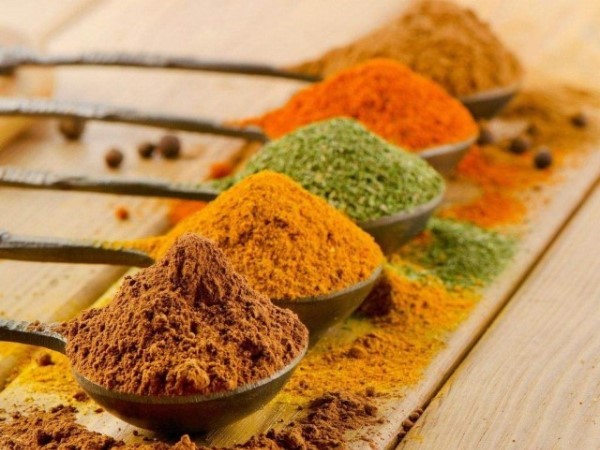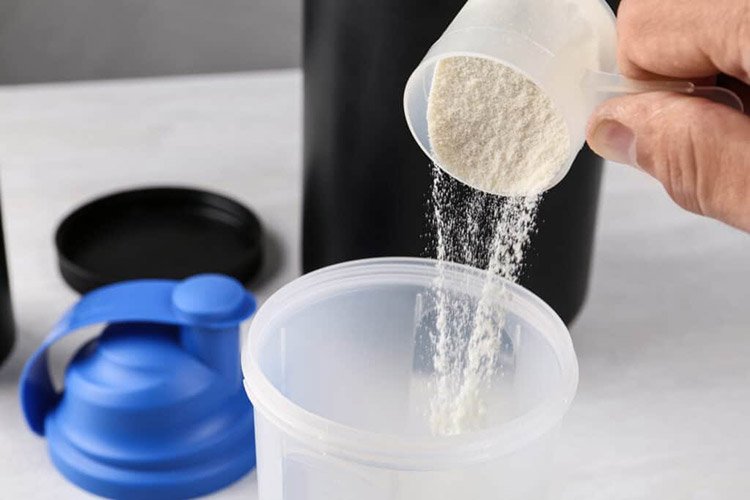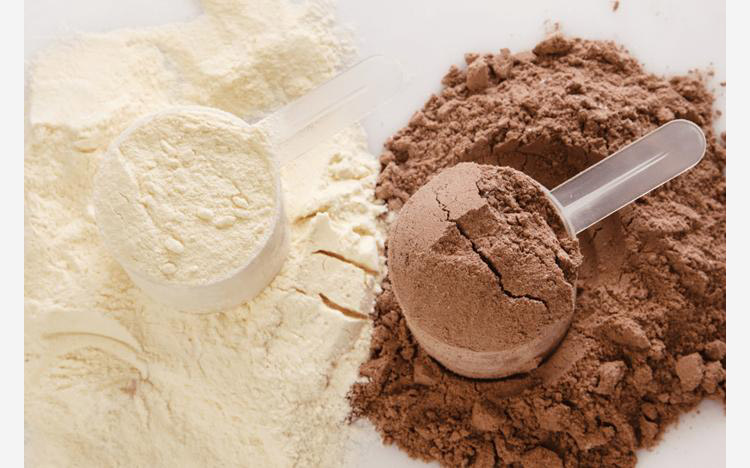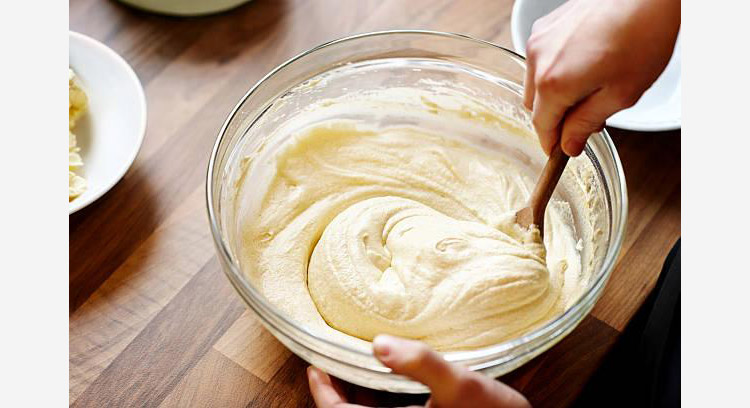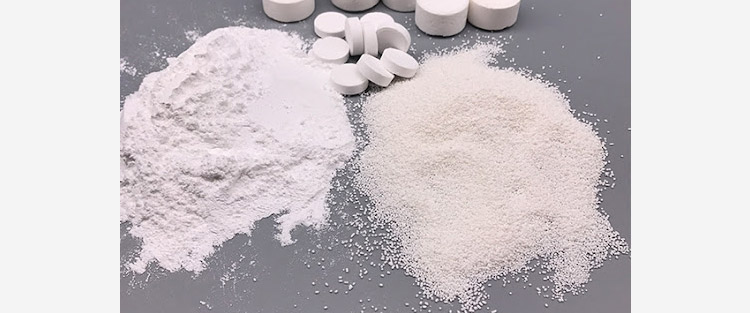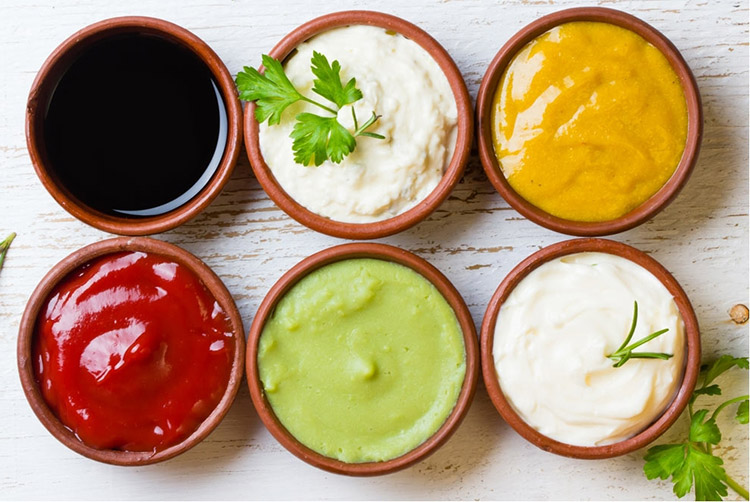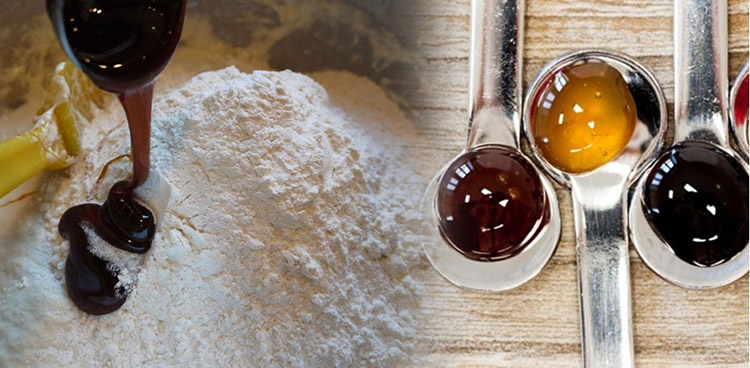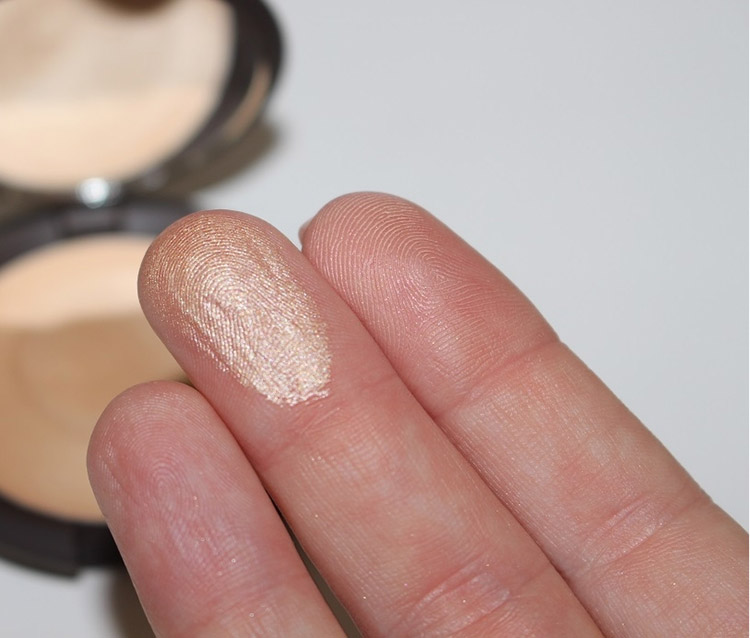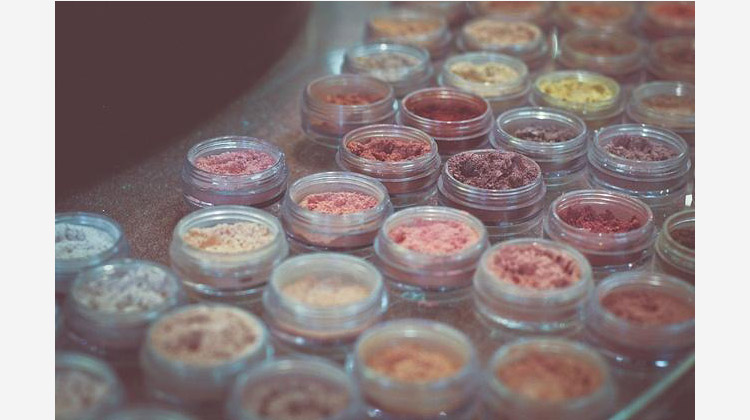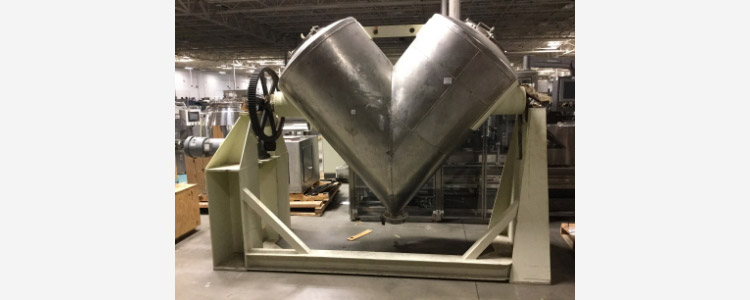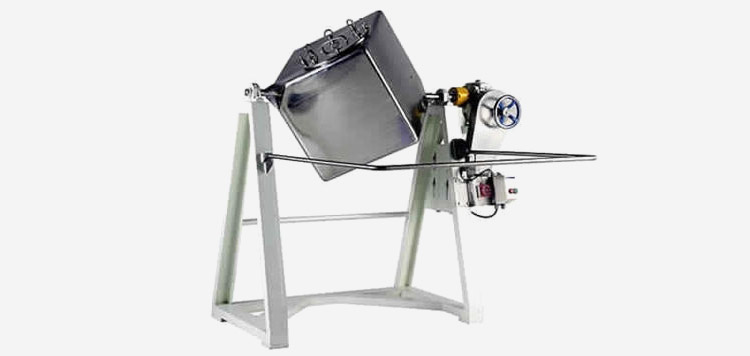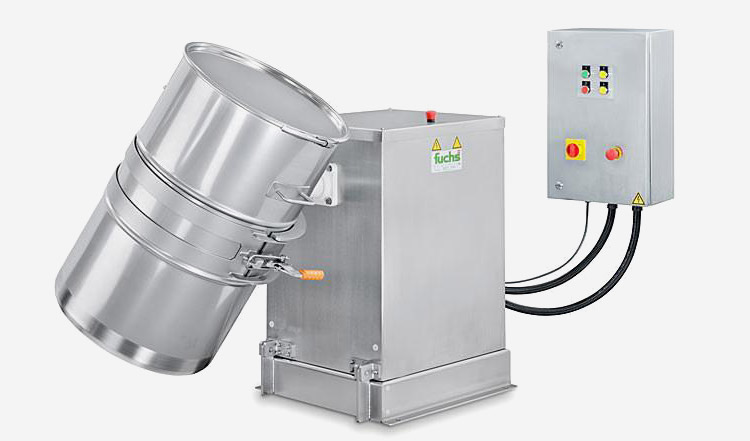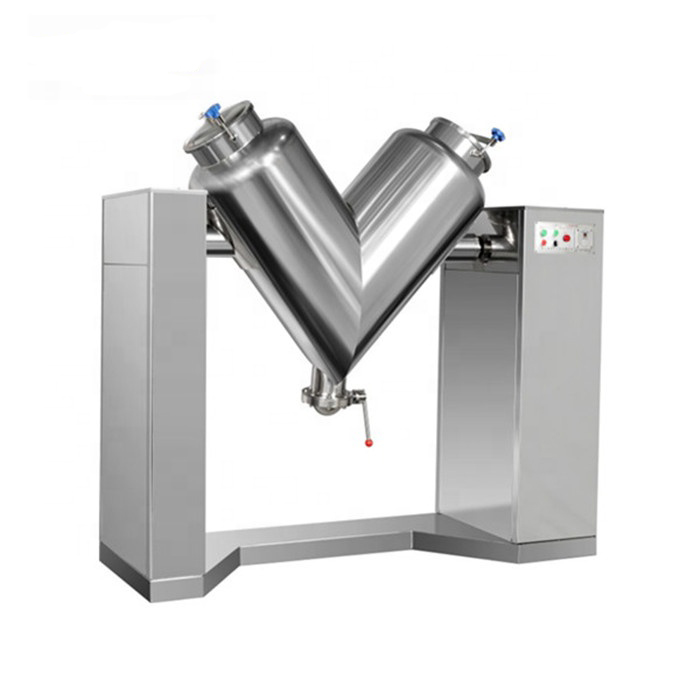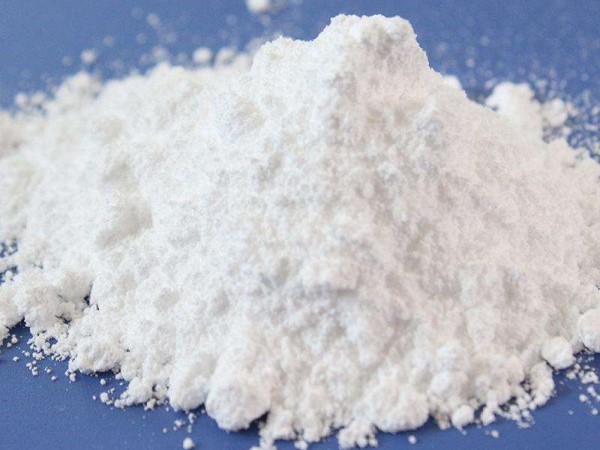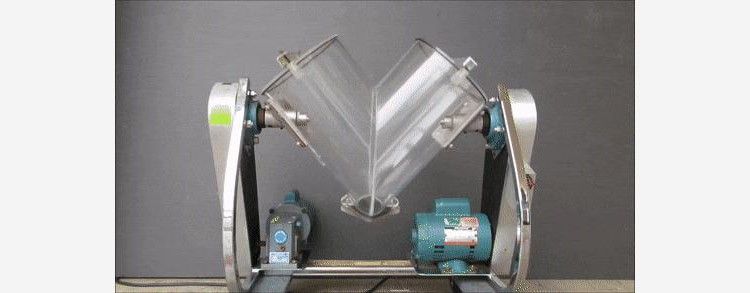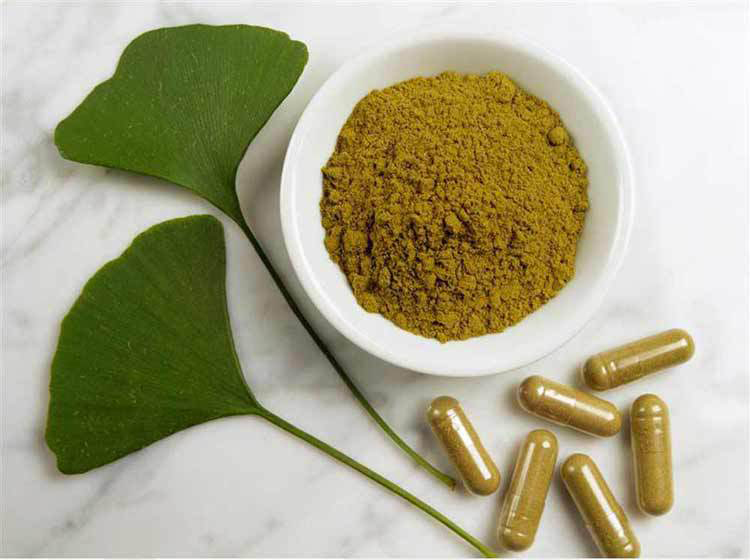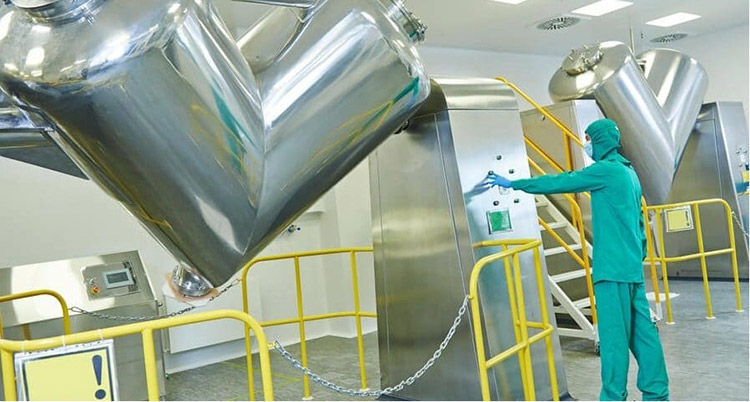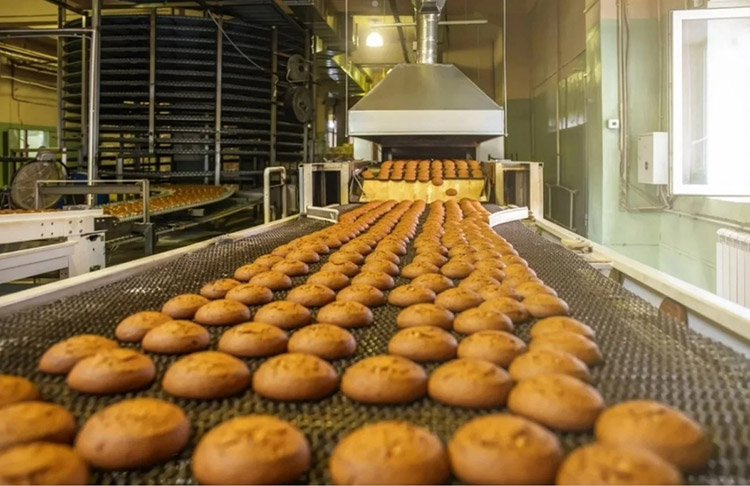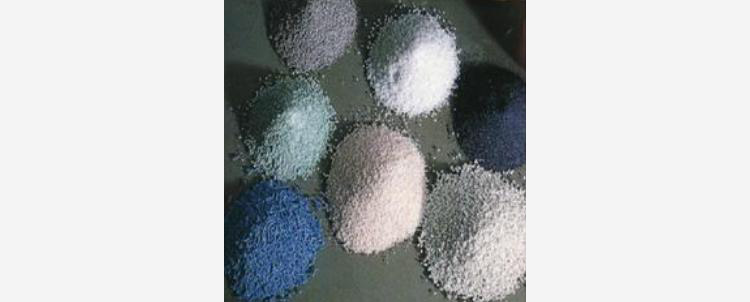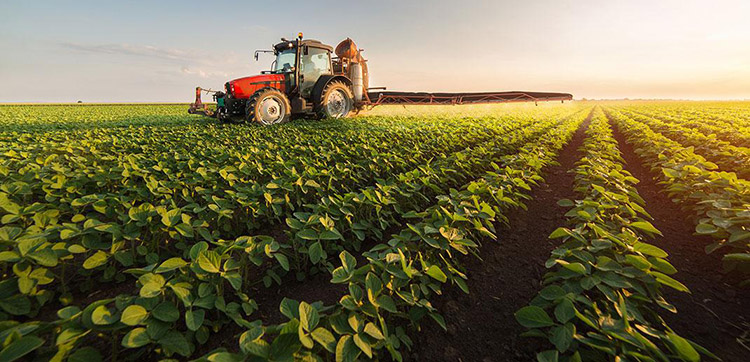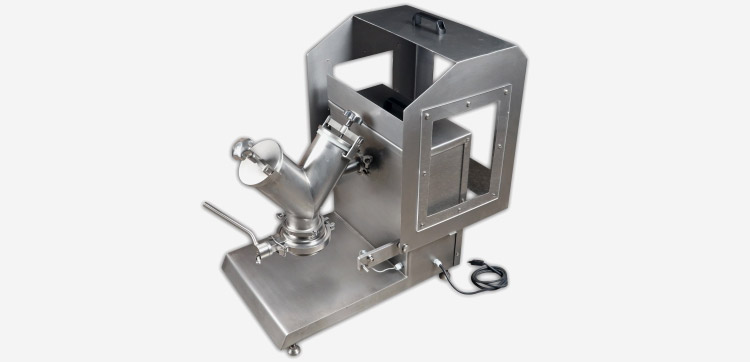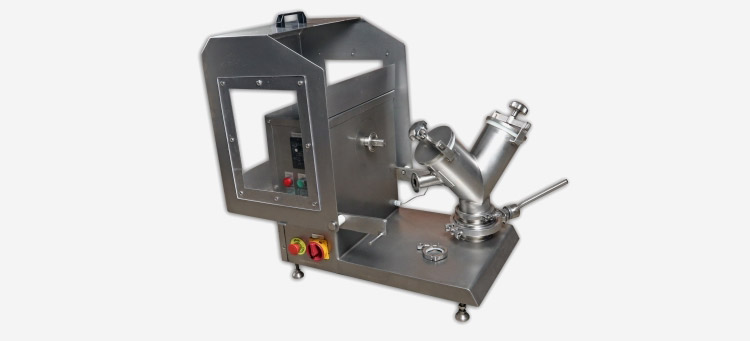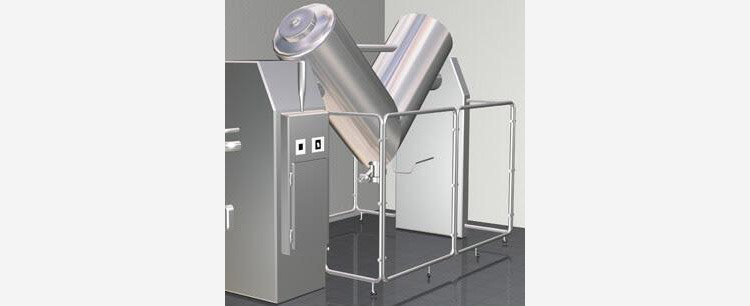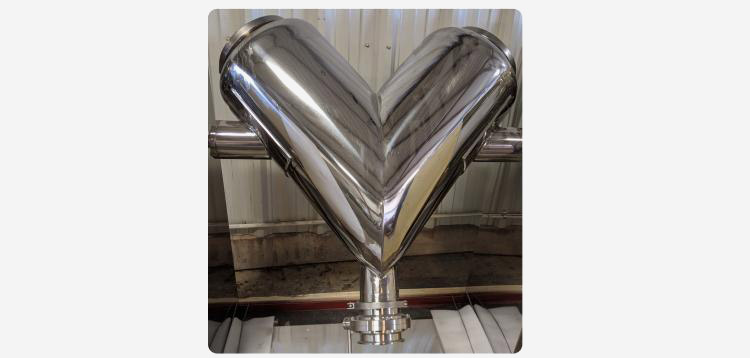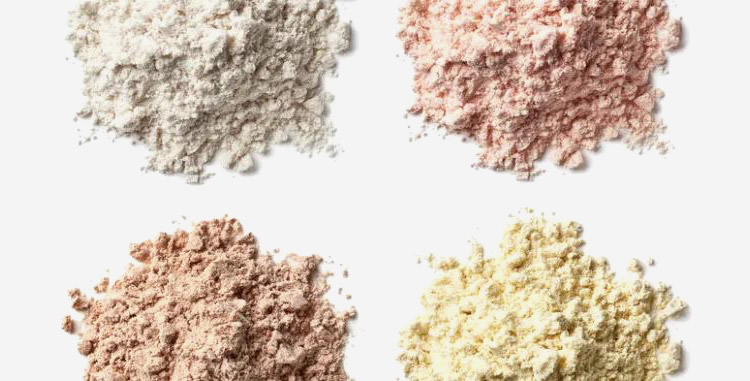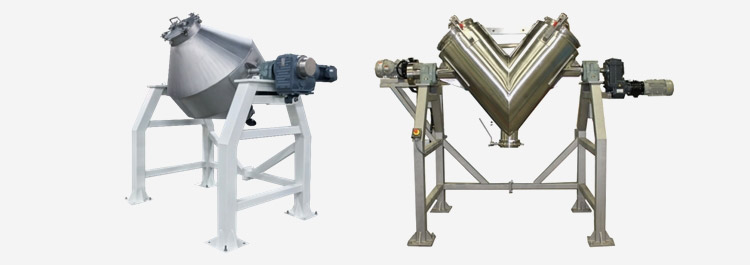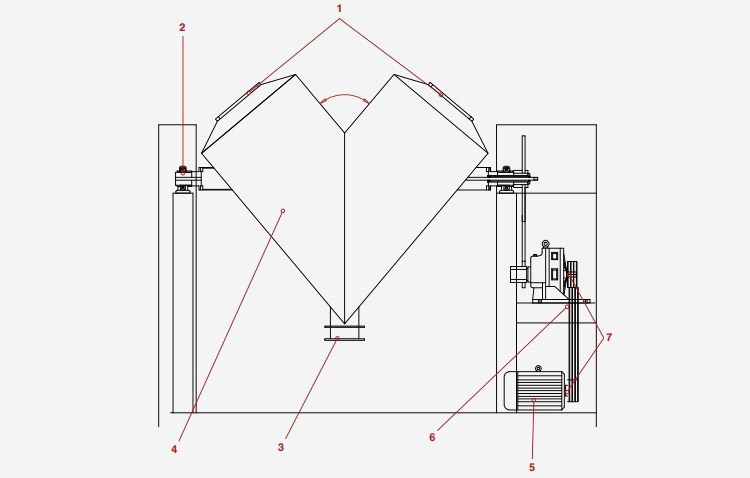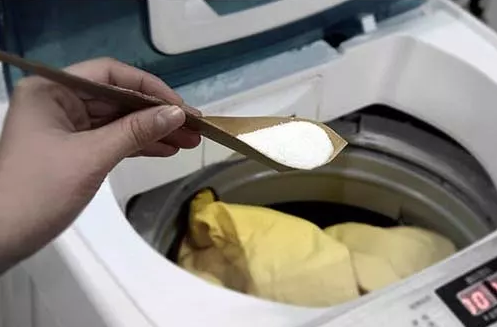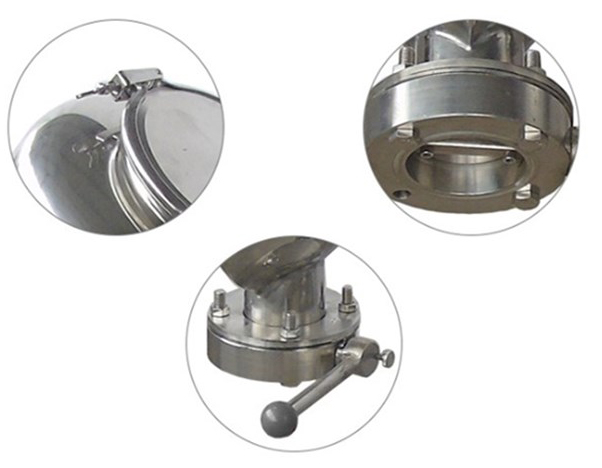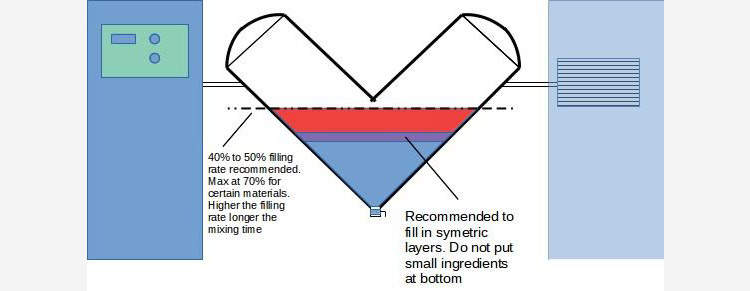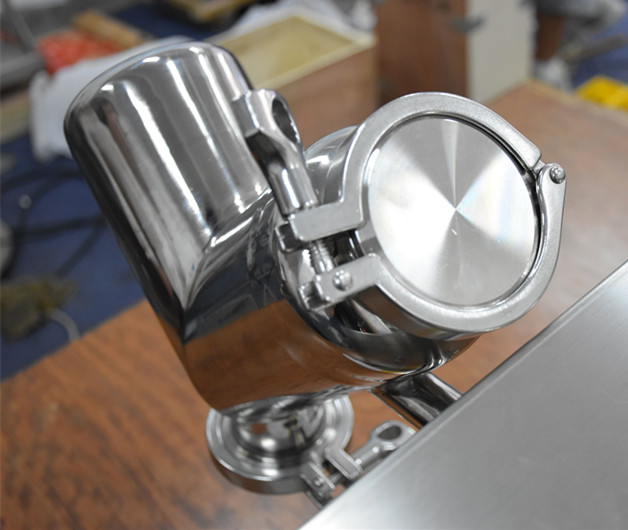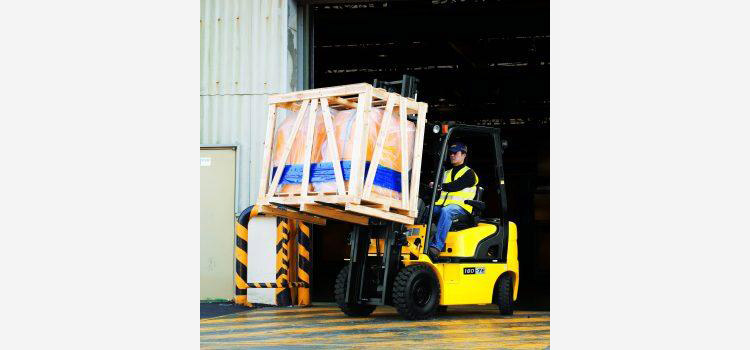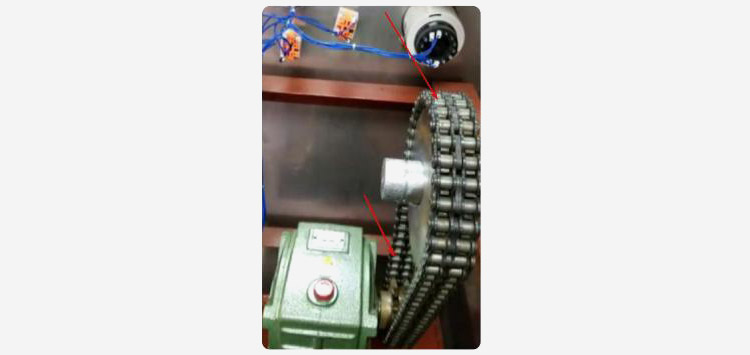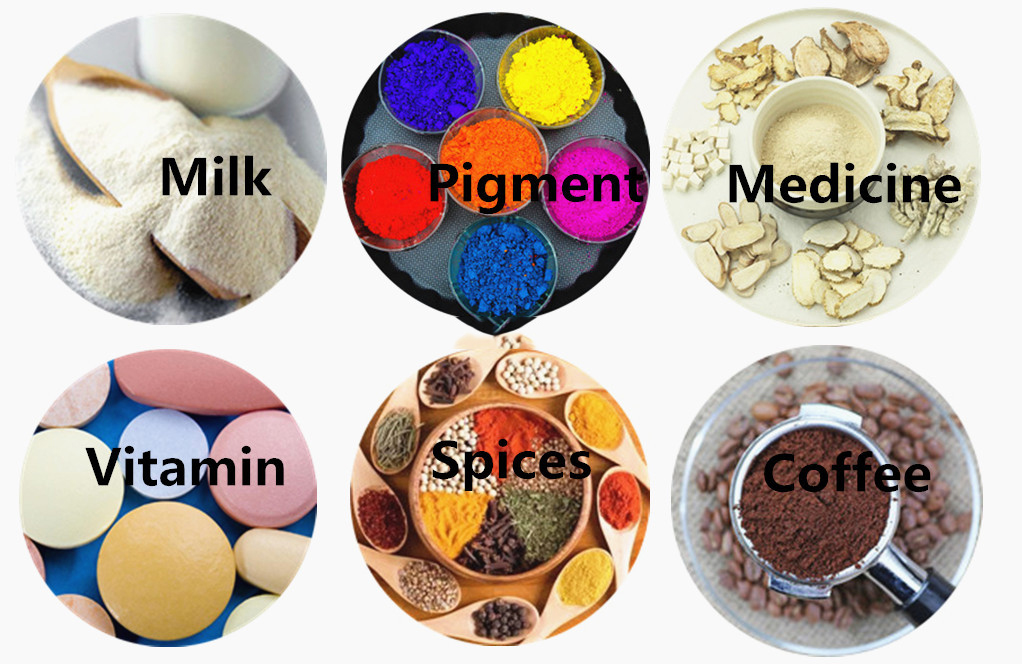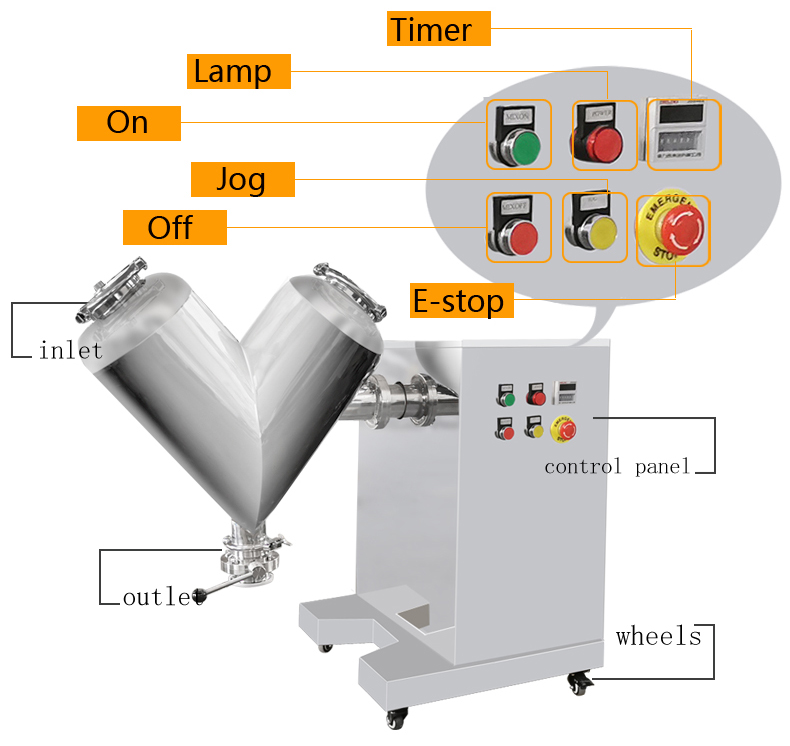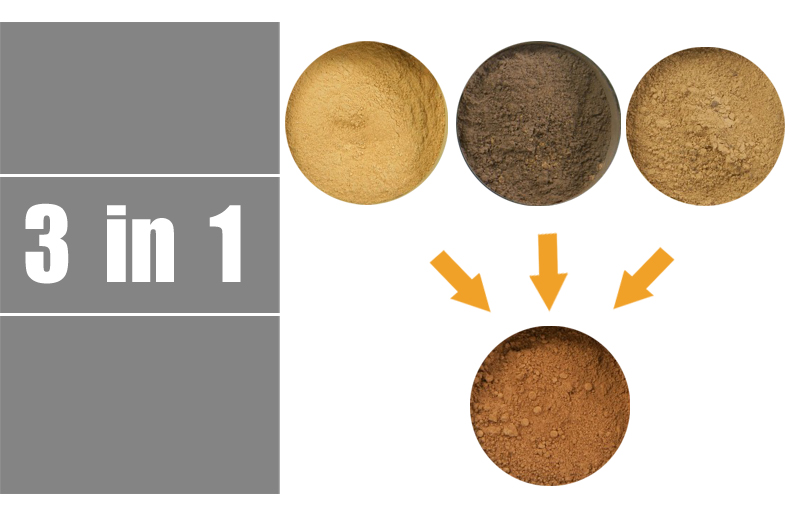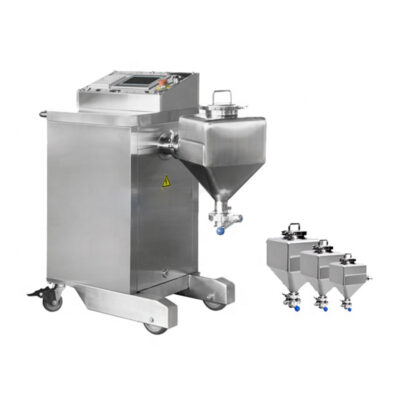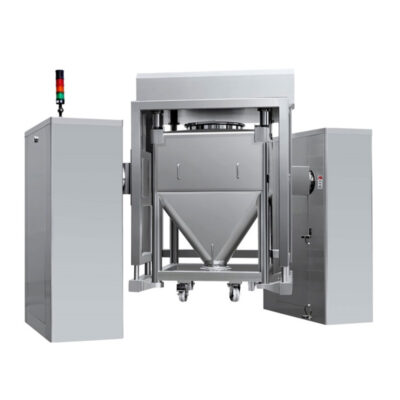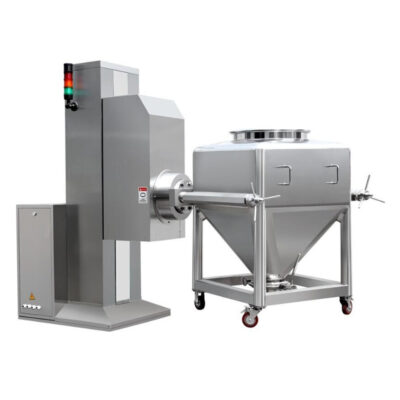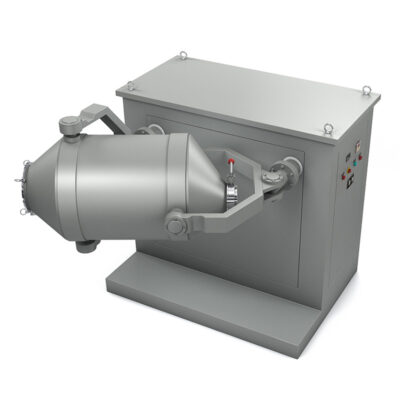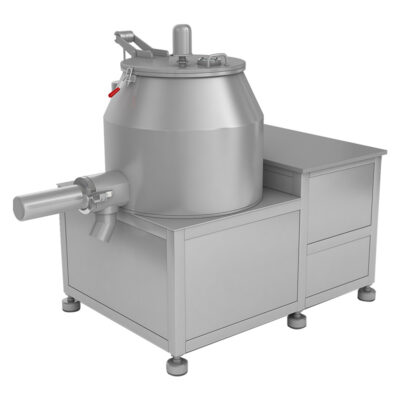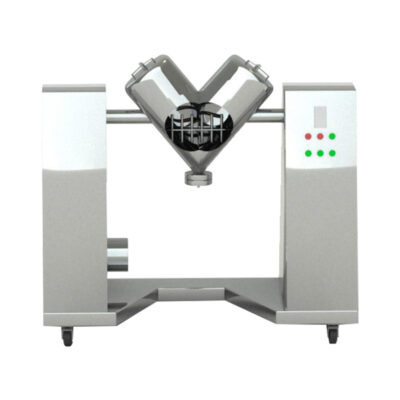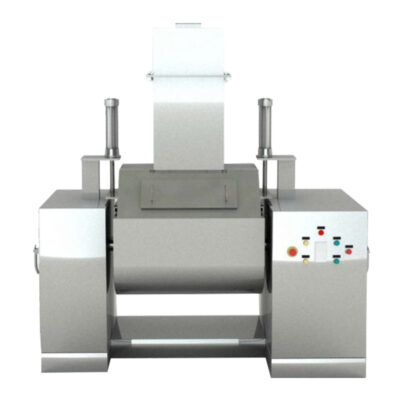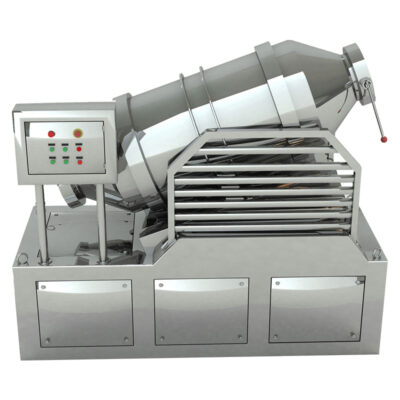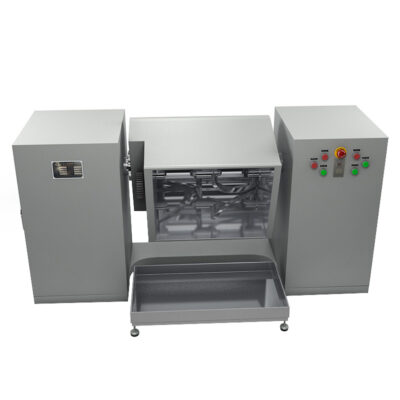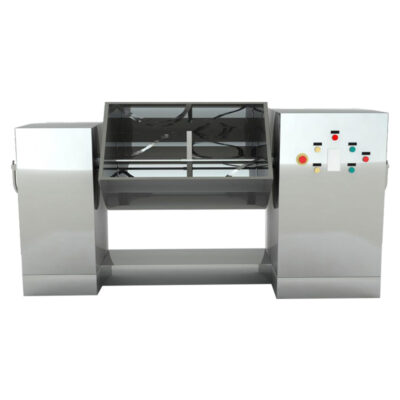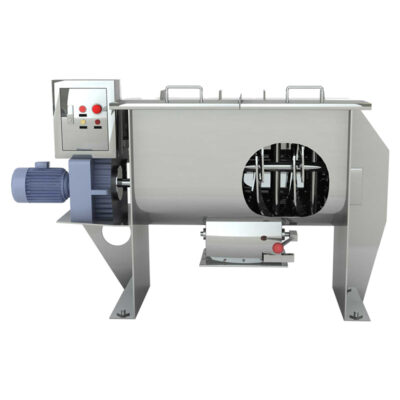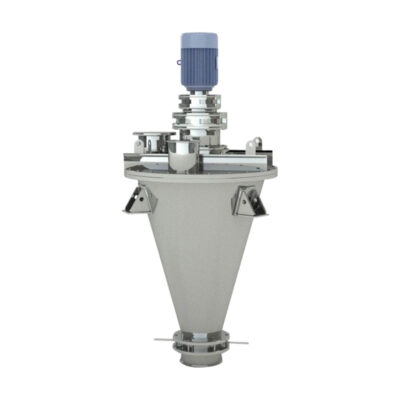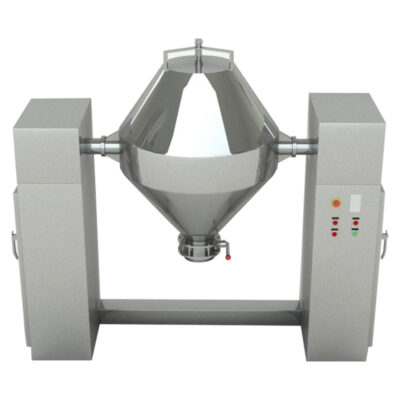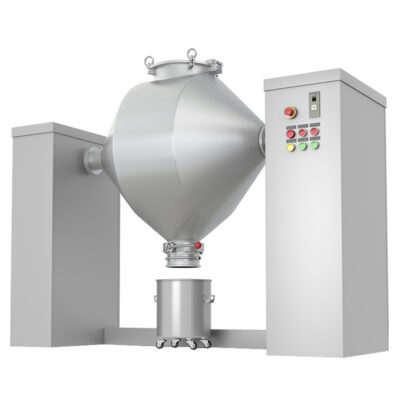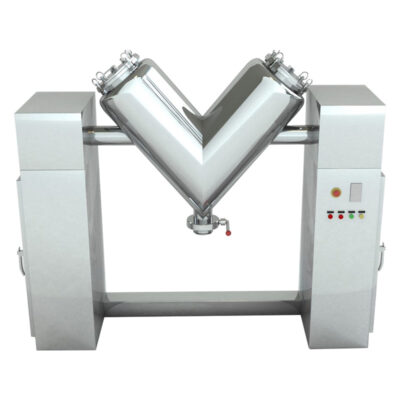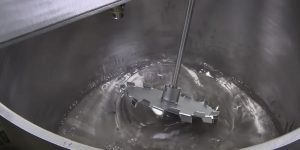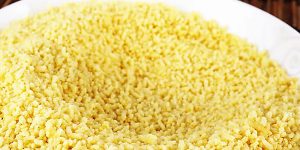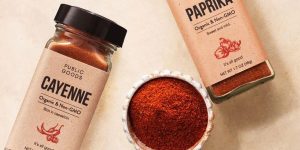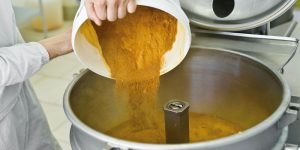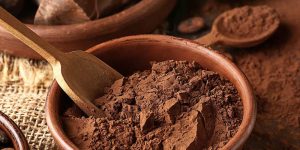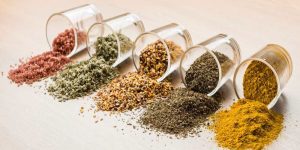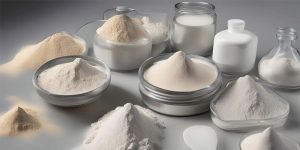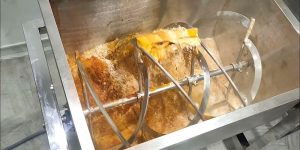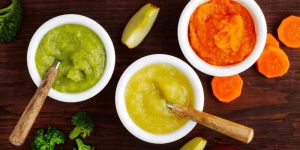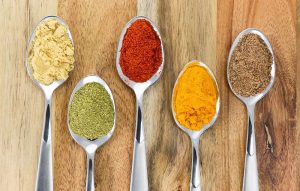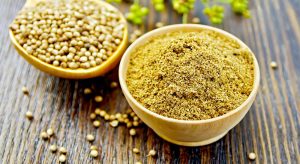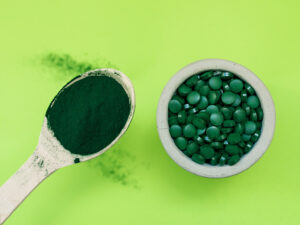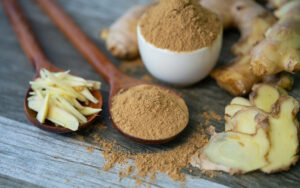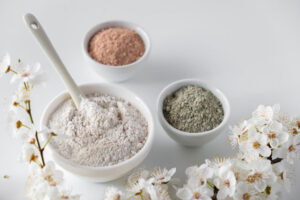V-Blender:The Ultimate Buying Guide in 2025
Particle blending is always considered an important parameter of food, polymers, pharmaceutical and metallurgical industries. An intimate blending of particles plays a key role in the perfect compounding of substances. There is a wide range of blenders available across the globe that demands household to industrial applications.
Blending of Powders
V- blender, a commonly used mixing equipment that is designed to blend granular substances. V-blender is utilized for mixing dry powders homogeneously.
V-Blender for Blending Powders
You already have an idea about the importance of blending in different phases of the manufacturing process. It is highly recommended to obtaining a smooth and uniform texture for desirable product efficiently. V- blender is referred for manufacturing unit of therapeutic, or topical medicines, food, and beverages, chemical, cosmetics, dairy, etc.
Fortunately, the advancement of industrial blending has been established and further expanded.
Design of V- Blender
So, if you’re planning to invest money in buying V-blender, then you’re at the right place. This informative blog will help to assist from basic to advance knowledge about V-blender such as classifications, features, operating procedures, installation, maintenance, and much more.
Let’s get into it!
1.What is blending?
Mixing substances thoroughly is known as blending. Blending has been one of the important parameters during the manufacturing process. From the smooth and perfect texture of the product, you can determine the way it is blended or mixed.
Blending is the most frequently utilized method in pharmaceutical, chemicals, cosmetics, and other manufacturing sectors. Because it is the widespread process for mixing ingredients or molecules and combining them into a single mass. The blending machines used for this purpose are different and specifically constructed according to the unique requirement of mixing.
2.Why blending is so important for industrial manufacturing units?
Protein powder
On an industrial scale, the blending process encompasses a homogenous distribution of substances. For instance, a homogenous blending of oil and water phase and added substances. As the handling of industrial substances requires effective and gentle blending to preserve the integrity of active ingredients. That’s why the blending process is of prime importance.
3.Are mixing and blending the same things?
Mixing and blending are the two most critical parameters of manufacturing units of many industries. These procedures are almost utilizing in every manufacturing process such as, from cement to the loaf of bread that you eat every morning.
In everyday language, they are almost considered as same. But in reality, both have distinct properties.
Hence mixing and blending are different from each other. The difference between blending and mixing involves around dry and wet ingredients.
- When you incorporate sugar in water or flour in water to make a wet dough is simply a mixing process. Other examples are, making soup, noodles, creams, and so on.
- On the other side, if you are encountering the mixing of dry ingredients such as cake mix, talcum powders, salts, etc. usually need a blend.
A powder blending requires a variety of fine ingredients in a fixed perfect ratio. Rarely, blending involves a little quantity of water.
Mixing of powder in water
- Blending is a relatively gentle procedure. Whereas mixing is an aggressive process that requires blades and agitators. That’s why Blenders used on industrial scales are more effective to handle extremely delicate materials or commodities.
Blending
- Blender works with solid to solid or a small volume of water is required, whereas mixing necessitates solid-liquid interaction.
Mixing
We hope now you have fully understood the exact terminology of mixing and blending. Let’s move further.
4.What type of products required blending?
Discussed below are some products that utilize industrial blending as a prime process involved in manufacturing. For instance:
- Blending of Dry Solid
Dry solid blends are usually those products that undergo the process of dry blending. In this case, you do not even require adding water for mixing, only blending machine and drying ingredients are implicated.
Coffee, cakes, bread or dry seasoning spices, ceramic, fertilizers, and a lot more go through dry blending.
A blending of dry solids
- Dressings and Spreads
Dressing and spreading products frequently require long-term blending. Especially when they are incorporated with oily substances. Therefore, an extended amount of time, as well as gradual blending, can help to achieve a uniformly blending product. A blending of dressings and spreads does not require high-speed agitators or sharp blades for mixing. They only require a gentle and thorough blending repeatedly. Similarly, sauces, such as barbecue sauces, also experiences a blending process.
A blending of Dressings and Spreads
- Syrups
Syrups are sweeteners that are added to confectionery goods.
Do you know what are confectionary items?
Pancakes, brownies, brown sugars, etc., are included in this category to achieve sweet taste and flavor. Preservatives are commonly pouring into syrups along with artificial sugars/sweeteners. Furthermore, they also require a high shear mixing dramatically eliminates the blending time, low heat requirement, and get a uniform consistency.
So, if you’re planning to commence a business related to confectionery goods. Then you must understand the importance of industrial blending to get a successful start-up.
Blending of Syrup
- Shimmer and Shine
Cosmetic mica is characteristically originated from muscovite. Muscovite is also identified as white mica. It is naturally present in flaky sheets that are eventually crushed into fine particles.
These fine particles are blended with other ingredients to form a compact or powdery shimmering product that gives a high degree of shimmery looks.
5.What are the different types of mixers/blenders?
A diffusive mixers which is also known as tumbling mixers or blenders are made-up of compact metallic vessel of stainless steel that revolves around fixed axis allows optimum mixing to raw materials. The working mechanism of mixers and blenders are based on the process of diffusion.
The degree of blending and mixing depends upon following factors:
- Filling volume of material (must be 40-60% of total volume).
- The resident time.
- Rotation speed.
- Feeding and discharging of material
- Angle of the mixer/blender.
Diffusive mixers are sub-categorized into the following sub-classes:
- V- Blender: V-blender is the most popular category of diffusive mixers, that is comprised of V- shaped shell mixer that allow tumbling of free-flowing substances.
V- Blender- Picture Courtesy- Surplus Solution
- Double Cone Blender: Double cone blender is multipurpose blender, that has similar working properties of V-blender. Double cone blender is made up of two conical shaped vessels separated by a cylindrical section. This machine is not suitable for very fine powders.
Double Cone Blender- Picture Courtesy- SB Pharma
- Cubical Blender: A cubical blender is suitable for blending dense powders and granules. As it names shows, the construction of this machine is based on cube shaped container that is mounted in a tilted manner that allows rotation about an axis. The container of cubical blender is either hanged at the center or from a corner. This machine gives 3-D mixing dimension when installed from corner.
Cubical Blender- Picture Courtesy- IndiaMart
- Drum/Vertical/Tumbling Drum Blender: The mixing action of drum blender is largely diffusive that follows a gravity flow. By periodic lift and falling of this equipment gives diffusive mix to the mixing material. This machine gives high efficiency if it is attached in an inclined position. This is an ideal tool for mixing fragile particles as it allows a gentle mixing.
Drum Blender- Picture Courtesy- Fucha
6.What is V-blender?
AIPAK v blender
V blender is an extensively used blending equipment as it provides smooth, easy, and sufficient mixing. It includes dry bulk powders, granules, and pellets required for product manufacturing.
V blender is a very simple and reliable machine that constitutes a good choice for small- and large-scale manufacturing units of pharmaceuticals, chemicals, food, and beverages companies. This machine is suitable for pre-mixing of ingredients with gentle and high flowing shear mixing for dry solids. It has a blending intensity of approximately up to 1:100,000. Moreover, the blending capability of V- blender is precise for specific weight substances.
7.What are the features of V- blender?
V- blender has two identical- cylindrical arms connected at the angle that forms a V shape. It allows an axial flow inside that keeps on separating and mixing products ultimately result in a swift, instantaneous process. V blender facilitates a uniform mixing that is achieved without the use of deflecting blades or other tools. V-blender mixing is based on an automatic vacuum loading system that helps you in minimizing operating time with reduced chances of product wastage. Other important features of V- blenders are as followed.
- The entire construction and design of the mixer are free from corners, grooves, or any angles where the product results in product accumulation.
- The Inlet of the V-blender is close-fitted with air-tight covers that ensure an appropriate mixing without the entrance of ambient contamination.
- V-blender is a compact designed machine that has noise-free working features occupies minimum surface, frames.
- During loading and discharging of material low energy consumption is required as compared to other mixing systems.
- V- blender is high- a profitable machine that yields high production, great blending property, and requires minimum maintenance.
- For blending those substances that require little addition of water, with the help of a pressurized tank or pneumatic pump, water is incorporated into the feeding unit utilizing gravity.
- V- blender is simple to clean and maintained due to lack of grooves and highly- polished area.
8.What is the working principle of V-blender?
The working principle of the V-blender is based on the rotation of the V-shell. The whole shell of V- blender is designed as a V-shape made up of two cylinders bonded at 75° to 90° angles. When this shell is rotated it helps in the facilitation of mixing components using a diffusive mixing process.
Do you know what diffusive mixing is?
A diffusive mixing process is accompanied when the mixing of substances occurred in a random motion.
A diffusive mixing in V blender
V blenders do not have any agitator insides. All movement of powder is because of rotation of V blender that generates an avalanche of substance. A desirable mixing is attained after a certain number of rotations. As the V blender does not have an agitator inside, therefore this kind of mixing device gives you a satisfactorily mixing of free-flowing solids. But this type of mixing is not suitable for those cohesive substances as they cannot be dispersed properly with rotation movement.
V-Blender Machine
The mixing substances are introduced into the V blender from two openings available on the top of ‘V’. The discharging of material is also taken place with the help of a V-shell at the end of the process.
Due to the slow and gentle tumbling of the V-blender in the absence of an agitator, the blending of components can be subtle with reduced damage of ingredients.
9.What are the industrial applications of V-blender?
When you hear about blender, a small home blender comes in mind. But industrial blenders are different because of large capacity production.
Those blenders we apply to make milk shakes and smoothies may resembles with industrial blenders due to operating principle but possess different applications and capacity.
Applications of V-blenders are most often used for blending free-flowing dry substances. Furthermore, V- blenders are extensively used in many production plants of cosmetics, agriculture, chemicals, etc. This blending is considered as a most integral part of manufacturing for a diverse range of products. V-blender is generally utilized for the following:
1. Pharmaceutical:
For pharmaceutical preparation the major benefit of V blender is to control the handling of large pharmaceutical production batches. It enables you to formulate the exact proportion and correct scale up of ingredients.
Pharmaceutical capsule filling powders
With specialized V blender machine, the blending and mixing process can be achieved more efficiently, uniformly with a lot of benefits to manufacturer. This is a very essential equipment for most advanced production endeavors.
Pharmaceutical preparations such as ointments, pastes, base, creams, syrups, etc. necessitate extensive blending. It is imperative to assure that pharmaceutical active ingredients are treated with utmost care.
A little inaccuracy can be catastrophic for pharmaceutical formulations. Therefore, pharmaceutical types of equipment used for manufacturing purposes should be well-defined to yield accurate and suitable outcomes. For this purpose, V-blender is one of the most commonly used blending machines. V-blender does not require the utilization of blades for blending, instead, the entire process relies on the force of gravity. A smooth coat of stainless-steel renders it easy to clean, as well as its nonporous nature ensure reduces the risk for cross-contamination.
V- Blenders are primarily found in the scientific laboratories, for instance, research laboratories, chemical compounds as well as production of small- and large-scale medications. Hereby, once the pharmacologists determine a reaction to make, say a medicine, they set V-blender for reaction on a broader scale to get best mixing of reaction mixture.
Thus, this is an ideal machine for dealing with pharmaceutical products.
Applications of V- blender in Pharmaceutical Industry
- Food Industry
Mixing and blending are two imperative aspects of food production.
V-blender has vast applications in the food industry. Blenders are utilized in increasing and stabilizing the blending and mixing of food products such as, flour, taste enhancers, preservative, flavoring agents and much more. Whatever, food and beverage you make V blender can accurately perform the blending job.
For instance, premixing of cereals, dairy powders, coffee, soup, spices, etc.
The V-blender machine has an especially designed enclosure made up of stainless steel. Hence it is durable, easy to clean, resistant to corrosion, and easy to maintain. V- blenders assure highly safe, hygienic, and accurate product manufacturing that is ideal for the preparation of food and beverages.
Applications of V- Blender in Food and Beverage Industry
- Nutraceutical
Today, the tendency of nutraceutical products is expanding day by day. These nutraceutical products encompass an extensive range of health-related products. For instance, herbal supplements, vitamins, mineral blends, and various energy bars. Thus, V- blenders are used for manufacturing these products as they require gentle blending to preserve the activity of herbal constituents. The fine blending accompanied by V-blenders most often incorporates more than 40 to 50 substances that involve powders as well as trace elements.
Application of V-blenders in Nutraceutical Industry
- Chemical Industry
Fortunately, V-blender equipment is engineered to comply with the basic requirements of chemical manufacturing. It has simplified the blending of chemicals with a more precise, accurate, rapid homogenous procedure. Such blending can not only handle proper blending but also facilitate a uniform distribution of various chemicals used in a single product.
Application of V-blender in Chemical Industry
- Plastic Industry
V- blenders are fully integrated blending units designed for consistently combining materials used specifically for the mixing of polymers and other raw materials such as resins, additives. V- blender is generally utilized in the rubber industry and considered as one of the key compounding tools. The blended material is introduced through V shape opening while they are properly mixed inside the cylinders with consistent rotations.
- Agriculture Industry
V- blender machine is widely used equipment in the agricultural industry.This blending tool is extensively used for blending agricultural insecticide, fertilizers, pesticide synthesis, granular fertilizers, and other agricultural chemicals. The V-blender machine is suitable for processing all the mentioned raw- materials and gives an excellent blend to yield considerable farming products.
- Cosmetic Industry
V – blender is used to mix dry bulk powders particularly used in making cosmetics. During manufacturing of cosmetics V-blender can effectively result in a uniform blending of powders such as distribution of colored pigments, blending of ingredients in talcum, face powders, blush on, or baby powders, etc.
10.What are the types of V-blenders?
V-blender is available in various types depends upon the type of blending you require. For instance, small-V blender, large V-blender.
1) Small V- Blender
A small-sized V-blender is perfect for blending substances for small production. Small V-blender has the power to create substances blending into a homogeneous, uniform, and compact form. These blenders are most commonly used for the production of material on a small scale to obtain s quick results. Because if you mix a small number of powders in a large V-blender, it would be able to yield expected results due to their larger size also the blending of a too-small quantity of powders can render difficulties in cleaning.
Powders and granules are supplied into the V cylinder either manually or using a vacuum conveyor.
It can separate and re-integrate the powdery substances gently. Moreover, like a large V-blender machine, this machine is also super easy to clean and the mixing of ingredients is achieved in a very short time. Small scale V-blender is used for blending pharmaceutical active ingredients, chemicals, silica, sugar, tablet coating, chocolate mix, etc.
A)- Mini V-blender Machine
B)- Mini V-blender Machine
2) Large V-Blender
A large V- blender is a well-known and innovative form of blending tool for the intimate blending of free-flowing substances on a very large scale. From small to large scale, the design of the V-blender machine is always very simple. Thus, due to this property, the V-blender machine allows very low-cost and easy maintenance. The blending capacity of a large V-blender on an industrial scale is approximately 6000-liter units. V-blender is supplied with special accessories such as internal choppers, vacuum execution, spray tray, and safety fence, and mobile trolley.
Large V-blender Machine
11.What are the advantages of V-blender?
Today, a variety of various blenders and mixers are accessible for industrial and commercial use. Thus, the importance of blenders cannot be ignored especially in manufacturing units. Furthermore, V-blender is commonly used and considered as a right selection for pharmaceuticals, food, and beverages sectors. Not only this, V-blender offers unlimited advantages and gives outstanding product revenue.
Safe, Easy to Clean, Perfect for Fragile Substance
- V- blender is suitable for fragile material as it does not have moving blades, therefore it minimizes the chances of particle size reduction. Moreover, the V-blender shape and design allow safe working without worrying about contamination, also it is moderately easy to clean.
V-Blender Machine- Safe and Easy to Clean
Ideal for Free-Flowing Substances
- V-blender is capable to deal with all free-flowing powders. That’s why V-blender is considered an ideal tool for blending in pharmaceutical companies.
V-Blender Machine-Ideal for Free Flowing Powders
Avoid De-shaping and Deformation of Substances
- V-blender provides a gentle and smooth mixing without causing the deformation of substances. A strong shear mixing process by V-blender allows the break-up of lumps by the mean of an intensifying mechanism thus it shortens the blending time.
Improper Blending of Substance results in Powder agglomeration
Feasible Charge and Discharge of Materials
- It allows easy charging and discharging of materials
12.What are the disadvantages of V-blender?
With due advantages, V-blender machines also carry some drawbacks. Discussed below are few disadvantages of V-blender.
- The installation and operation of V- blender machine require dynamic headroom, high technical operators, and proper training. The entire factors may cause increased expenditure.
- V-blenders are suitable for blending particles of various sizes and densities. Because it may segregate during discharge.
13.What is the difference between a double cone blender and a V-blender?
Selecting an industrial-scale blender is not an easy job. Because there are several essential factors that you should consider.
A double cone blender and a V-blender share the same working principle used for tumbling powders. But if you select the wrong blender, you could find poor product quality and manufacturing inefficiencies that can directly affect your business.
Mixing of slid dry powders by these blenders is almost similar with certain differences between mechanisms of action. For, instance both of them are tumble blenders, and whenever the vessel is inverted the content inside the vessel breakup. Both of them have modulated options for speed adjustment.
However, discussed below are some unique differences between these two machines.
Double- Cone Blender
Double Cone blender VS V-blender
- A double-cone blender is an efficient and simple blending machine that requires less headroom than a V-blenders. In comparison to a double-cone machine, the operation of a V-blender carries an extensive operation that required high energy and high space.
- A double cone blender is suitable for mixing two-five ingredients efficiently at one time. While V-blender is sufficient to blend two to ten different ingredients at one time.
- Double cone blender consist of double cone vessels, while V-blender is comprised of V- shape cylinders for blending the material.
14.What are the components of V-blender?
The components of the V-blender machine are as following:
A- Main Components
1- Feeder Inlets
2- Bearings
3- Discharge Chute
4- V- Tank
5- Motor
6- V-Belts
7- Drive Belt Pulleys
B- Electrical Control Components
The electrical components of V- blender machine is as follow
1- Start
2- Stop
3- Jog Machine
4- Operation Timing
5- Emergency Stop
15.What is the description of V-blender components?
The description of V-blender components is as follows:
1- Feeder Inlets
As its name shows, you can pour all the blending ingredients into V-blender via ‘Feeder Inlets’. The number of dry materials is to be added and blended through this route.
2- V-Tank
A V-tank shell combines all the powdery ingredients and allows their mixing.
3- Discharge Chute
After achieving the desired results, all blended ingredients are discharged from V-tank using ‘Discharge Chute’. A discharge chute is constructed at the lowered part of the V-tank which is confined with an efficient valve that regulates the withdrawal of products. Furthermore, the purpose of these valves minimizes material wastage and improve the work environment through cleanness and tidiness.
4- VH Base
A VH- Base is a control console that also comprises of a) Motor, b) V-belts, and c) Drive belt pulleys of V-blender
5- Electrical Control System
V- blender already comes with a pre-installed kit of the electrical control system. The structure and design of the control system/control panel may comprise the programmable Logic Control unit (PLC). This system is imperative to fulfill the demands of running processes. This unit allows the main power supplies to the system through the main ‘Start’ button.
The presence of safety limit buttons ensures loaded material in V-blender is safe via safety guards and you can easily run the rotation process without spillage of material.
In case of an emergency or accident, you can terminate the reaction via pressing’ Emergency Stop’.
16.What are the structural designs of V-blender?
The structural designs of V- blender machine is as following:
a)- Asymmetrical design
It is possible to contemplate two cylindrical tanks of several lengths making a blender asymmetrical. An asymmetrical design of a V-blender is suitable for blending substances from one shell to another and lowers the chances of segregation and reduced the blending time. Such blending may be achieved by baffles position that may improve the mixing by lowering the symmetry.
b)- Intensifier bar
Some manufacturing company allows the installation of an agitator with a blending axis. The addition of an intensifier bar can bring high shear mixing in cohesive powders or those powders that have a high tendency of agglomeration. Always keep in mind, those V-blender that are supplemented with an intensifier bar are more likely to cause product breakage.
Schematic diagram of V-blender Intensifier bar
A high shear mixing intensifier bars runs though trunnion into container. The presence of spray pipes allows the addition of liquid into the mixture.
It may form product agglomerates in charged materials or wet mixing. V-blender with attached intensifier bars has several important applications such as:
- Capability of mixing dry and wet material efficiently.
- Suitable for fine and course particles.
- Ideal for mixing of cohesive material.
17.What are the important blending parameters of V-blender?
- Type of Material
The mixing time for V-blender is typically 10-15 minutes. The important parameter for blending powders is to analyze the over-filling of V-blender or using cohesive powders. Due to this issue, you won't be able to get the right mixing time with abrupt outcomes. Thus loading of mix into a V-blender machine has a high influence on the blending time.
- Batch Size of the Blend
For proper blending, it is very important to leave some free space in a rotary that allows the free fall to the mix. The loading mixing material should be lies between 40% to 60%, which should exceed more than 70%. The blending of solids must require high space for free-fall roll over and the bulk level of powders must be exceeded to high that can allow the diffusion in V-shells. The filling of material up to 70% is too high for blending, thus it is necessary to run a trial batch to optimize the filling and blending rate.
According to the report, the blending time of 40% loaded material is 3 times faster than 60% and 5 times much improved than 50-70% of filling material.
The recommended Blending volume for V-blender
- Mixing speed
The typical speed recommended for medium size blender is 10-25rpm. Although supplier recommendation is always of prime importance. For free-flowing powder, the total number of rotations greatly influences the homogenous blend. For cohesive powders, along with a total number of rotations, a high shear rate is also an important parameter for perfect blending.
- Symmetrical Loading of Blended Ingredients
To load blended material is also another important parameter that one should keep in mind. For instance, if the amount of material in the 1stleg of the V-shell is greater than another side then the mixing time would be longer. Therefore, the level of mixing ingredients should be equal on both sides of the V-cylinder.
- Quantity of Ingredients
V-blenders work efficiently if the optimum amount of ingredients is incorporated into them. For instance, a lower amount of ingredients may take a longer blending time or vice versa.
18.How to install V-blender?
It is recommended that the V-blender installation be carried out by experienced and skilled personnel having previous sufficient knowledge of machine installations. Persons involved in the transportation installation of the machines should be well equipped with safety gear such as helmets, safety goggles, safety shoes to avoid mishaps. Personal and equipment care is necessary to avoid any accidents during installation that may result in injuries or financial losses. The following requirements should be read carefully and met before installing V-blender:
Foundation, clearance, and unloading requirements
- Unload the V-blender machine from the container and bring the machine to the site of installation with the help of a forklift. A 1500-pound capacity hoist can be used for unloading and assembling the machine. Special care should be taken to avoid accidents during the movement of the machine. Based on the model the V-blender machine approximately weighs between 97-1212 pounds therefore the installation site should have a level floor.
- It is usually recommended that the V-blender machine because of its design and nature of use be installed at the site of operation in a cage. A stopping mechanism should also be provided outside the cage that can stop the operation without the need to enter the cage.
- There should be a clearance of approximately six feet on all sides of the V-blender machine once installed.
- The V-blender machine is provided in wooden containers. Use the crowbar to open the containers. Be advised that some models of the V-blender machine are secured to the base of the containers. Use hammers to remove the machine from the base. Remove the straps with the help of scissors or a box cutter. Keep the nuts and bolts and the base of the container in case if the machine needs to be moved to a new installation site. After receiving the machine visually inspect all the crates for damages incurred during transportation before opening them.
- In case of any damage, components report immediately to the manufacturer.
Assembling instructions
It is not recommended to carry the machine using direct human efforts. Use forklifts and engine hoist to move the machine. At least two persons should be involved in the transportation of the machine, one should operate the machine and the other should stabilize the machine.
- Wrap the strap around the base and top of the V-blender machine first then attach the other end of the strap to the lifter.
- Ensure with the help of a level gauge the foundation is even and flat. Carefully lift the machine and bring it to the working site.
- V-tank is provided in a separate container. Remove the plastic wrappings around V-tank and place them on the main machine base.
- Secure the screws with the help of the Allen key provided with the machine.
- Connect the machine to the main power supply. Different models are equipped with either single-phase or three-phase motors having variable power supply requirements ranging from 110V-440V. Switch on the machine after making sure that all the bolts are properly tightened.
- Check all the moving parts are properly lubricated.
- Operate the V-blend machine empty for half an hour to check for any unusual noise or sound and vibrations. Periodically start and stop the motor and check emergency stop is working properly.
Once the machine has been installed, you must conduct a safety assessment to ensure that it complies with all local and industry-accepted safety regulations.
19.How to operate V-blender?
The basic mechanism of running the V-blender involves a filling of feeder inlets, the running time, and switching on the machine.
- Filling of Feeding Inlet
The V-tank is filled with powdery substances up to 2/3 of its total volume using a feeder inlet. Lock the V-Tank's feeder point by screwing the thumbscrew.
Feeder-Inlets of V-blender Machine
- Rotation of V-Tank
After achieving an optimum level of filling material, V-blender is ready to ‘RUN’ thus, press the ‘Start’ green button. Once the V-blender machine is ready to rotate, the powder can thoroughly begin to blend.
V-Blender Control Panel (Green Button- Start, Red Button- Stop’)
The process of V-Blender
- Releasing of Blended Powders
Once the raw materials are properly blended, ‘Stop’ the machine and in an upright position discharge the blended powder from Discharge Chute into the assigned container.
A Discharge Chute of V-Blender
20.How to maintain and manage V-blender?
To ensure longer shelf life and excellent operation of V-blender, maintenance is essential.
Discussed below are general maintenance checklists for the V-blender machine.
- Always use record before and after use of V-blender machine.
- Make sure all greasing parts of the machine should be lubricated regularly. Regular greasing and lubrication are essential to prolonging the operational life of this machine.
V-Blender- Important Parts for Lubrication and Greasing
- Before re-assembling the V-blender machine, oil and grease residue should be properly cleaned.
- Constant examination of loose nut and bolts are required before, during and after use. If the V-blender machine is not used for a week or more, then cover it with a neat plastic sheet.
- Scrutinize the Gearbox's oil window, oil them if the surface is brittle and producing unusual sounds.
V-Blender- Oiling of Gearbox
- Oiling of drive chain should be maintained to obtain a good performance of V-blender.
V-blender- drive-chain
21.What are the common problems of V-blender machines?
During operation, several issues can arise which can be resolved by adjusting certain parameters of the manufacturing process. Troubleshooting of commonly incurred problems is given below.
a) Duration of powder mixing is too long
Several reasons can increase the time required to mix the powder adequately. These include a high volume of powder in the V-tank, improper filling of powder, duration of the operation is short and different properties of powders intended to be mixed. To remove these issues always make sure that the V-tank is 2/3 filled, use sieves and mills to ensure uniform particle size, and select an appropriate and validated operation time. It is also recommended that the V-tank be filled horizontally rather than vertically
b) Knocking sound during operation
During operations sometimes a knocking sound may be heard. This problem is usually associated with the loosening of the V-Belt or other parts. It is recommended to stop the machine and remove the cause before continuing with the operation.
c) Resistance during operations
Heavy resistance is met during operations when moving parts are not properly lubricated, locked, worn out, or unclean. Proper lubrication and scheduled maintenance will ensure the resistance during operations is kept low.
d) Vibration during operations
A little vibration is expected during operations but too many vibrations should be immediately checked for, cause identified, and removed. It usually occurs when V-belt is worn out, the machine is not fitted with anti-vibration pads, or pads are worn out and parts are held loose. Replace the V-Belt, place new pads on the bottom of the machine, check the machine parts, and tighten as necessary.
22.What are the consideration factors before buying V-blender?
To run any business successfully procurement of the right equipment is very important.
Before purchasing a V- blender machine you must consider the following factors.
- Feeding and Discharging of Material
Most often a method of feeding and discharging the raw material is different in various V -blender machines. Some automatic V-blenders have simple loading and discharge methods as compared to a manual system.
- Machine Structure and Production Capacity
V blender structure
To analyze machine structure and production batch size is of prime importance. You cannot deal with the production of smaller batch sizes on a large V-blender machine. A similar large batch size cannot be assembled using a small V-blender. If you have batch size volume in thousands, then always opt for a larger V-blender instead small one.
- Quality Compliance, Shipment Trusts, and Set-Up Facility
Before buying a V-blender machine always look for machine validation and critically measure all international quality compliance verification for the machine. Furthermore, the shipment charges of V-blender may vary from nation to nation and corresponding cities. For a large-scale set-up of a V-blender machine, it is better to assess the surface dimension for placing the machine. Because to know the dimension will allow you to assess an appropriate size of V-blender equipment. Furthermore, always consider those manufacturing companies that offer satisfactory installation and setup facilities for V-blender machines.
Additionally, whenever finding a new manufacturing company, look for the following factors, such as:
- You must ask for product density to be blend using V-blender.
- The manufacturer should provide an expected mixing and completion time of the V-blender.
(Note: Always keep in mind, V-blender must not be filled with more than 40-60% of the total volume of the blender. The maximum filling volume is 70%.)
- Secondhand V-Blender
You may find used V-blender machines in the market. But whenever you look for buying secondhand V-blender, you must go through the following points:
- Run the blender, observe bearing sounds and possible vibrations.
- Look for damages, scratches inside the shell.
- Blending capacity of the machine.
- Test trial of the V-blender, blending time, and speed modulators.
Conclusion
In a nutshell, V-blender play is an ideal blending tool for free-flowing dry powders and granules. From this guidance blog, you are now clearly addressing the advancement and excellent outcomes of using V-blender. Thus, we assure an appropriate selection of V-blender can skyrocket your brand.
Don't forget to share this post!
Bin Blender Related Products
Bin Blender Related Posts
Bin Blender Related Videos
CONTACT US
Tell us your raw material and project budget to get quotations within 24 hours.
WhatsApp Us: +86 181 6426 8586
Want the best price & newest pharmaceutical machinery buying guide,tips and trends sent straightly to your box?Sign up for AIPAK’s monthly newsletter,we’re free for your consultation and Offer you the most suitable solutions!
The Buyer's Guide
- Capsule Filling Buyer's Guide
- Blister Packaging Buyer's Guide
- Tablet Counting Buyer's Guide
- Tube Filling Buyer's Guide
- Cartoning Buyer's Guide
- Gummy Making Buyer's Guide
- CO2 Extraction Buyer's Guide
- Empty Capsules Buyer's Guide
- Suppository Filling Buyer's Guide
- Tablet Coating Buyer's Guide
- Tablet Press Buyer's Guide
- Softgel Encapsulation Buyer's Guide
Most Popular
- 7 Importance Of Pharmaceutical Packaging In Different Applications You Must Know
- 6 Advantages You Must Know About Tablet Counting Machine
- 8 Advantages of Blister Packaging You Must Know
- 6 Critical Applications of Automatic Capsule Filling Machine
- 6 Stations You must Know to Improve the Filling Quality of Automatic Capsule Filling Machine
Tell us your material or budget,we'll reply you ASAP within 24 hours

